The office, like the city, is an ecology. It is one that prospers and flourishes through the interactions between its inhabitants and their environment. Like cities, those interactions happen at numerous scales.
When designing workplaces, the relationship between the individual and their environment takes priority. With cloud computing becoming ubiquitous and allowing for individuals to work from any and every location – the need for dedicated and physical office space appears to be diminishing. However, the physical workplace is still important because it has the ability to act as an incubator, bringing together a multitude of personalities and experiences to create, innovate, and learn from each other. With all the time people spend at work, more than one-third of the week, the office needs to create a sense of comfort, belonging, and inspiration to spark innovative outcomes.
The contemporary office is more than just a place of production; especially for mission-driven companies, it is the physical embodiment of the company’s values and mission. When bringing people together in a workplace, interpersonal harmony becomes inseparable from company culture and the spaces it defines. It is an ecology. Through a diversity of informal and formal spaces, the well-designed office ecology provides spaces for collaboration, comfort, moments of solitude and congregation. Above all, thoughtful workplace design engages the individual in a profound, meaningful way. In a recent study published by Steelcase on workplaces, more than one-third of workers in the world are disengaged. In the U.S., 14% of individuals consider themselves highly engaged while 9% consider themselves highly disengaged. [ 1 ] In order to realize flexible and diverse spaces that engage employees and create a sense of community that attracts and retains the best talent, a well-designed office ecology will enable relationships to occur at varying scales between the individual and the spaces they inhabit.
Scale 1: The Immediate
The immediate is about you, your desk, your neighbor, your proximity to communal spaces, and most importantly what you need to be comfortable in that environment. In a 2011 study by organizational psychologist Matthew Davis, it was discovered that an open office creates a symbolic sense of an egalitarian work environment, but it was damaging to workers’ attention spans, productivity and creativity. [ 2 ] Each person thrives differently in the workplace. However, not everyone works the same way so design needs to respond to the needs of different work styles.
A well-designed open office provides a sense of equality among many while addressing issues of scale and acoustics; instead of a vast room full of tables, the space can have soft subdivisions that provide for team clusters. These smaller groupings allow teams to collaborate effectively while providing less visual and auditory distractions from the rest of the office.
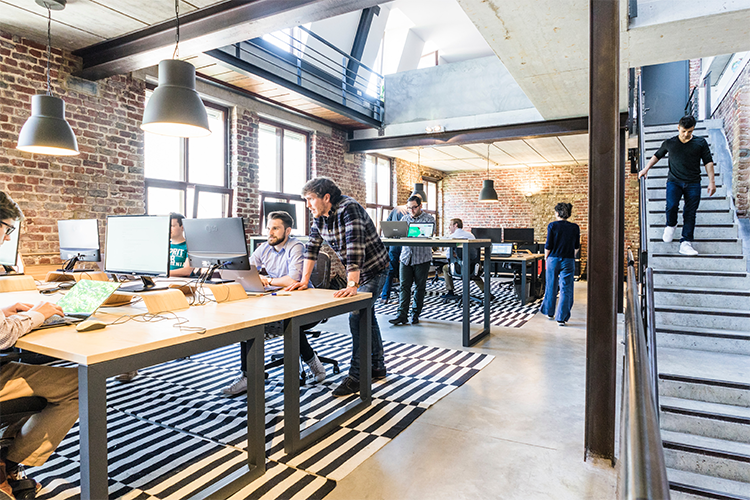
In addition to individual workspaces, larger tables such as banquettes or picnic tables create an informal work area while allowing for a multitude of activities to happen simultaneously (group gatherings, individual work space, eating lunch, small informal meetings, etc…)

The need to escape is essential, whether it is to make a private phone call or to hyper-focus on a project. Through the creation of pocket spaces that are more secluded, an individual can gather their thoughts, refuel, and refocus.
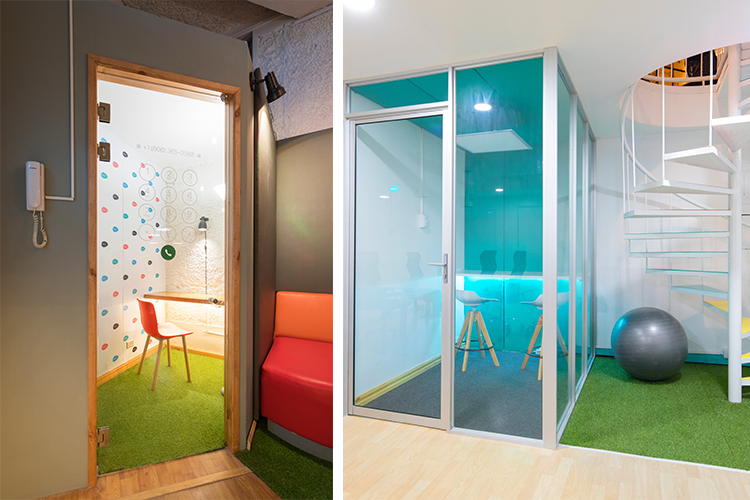
A workplace that empowers the individual and places them in control of choices within their space has tangible benefits on a company’s ability to thrive. In 2005, a study in the Journal Environmental Psychology found that “the ability to control the environment had a significant effect on team cohesion and satisfaction. When workers couldn’t change the way that things looked, adjust the lighting and temperature, or choose how to conduct meetings, spirits plummeted.” [ 4 ] For example, some contemporary workplaces give their employees freedom to take ownership of the appearance of their immediate workspace.
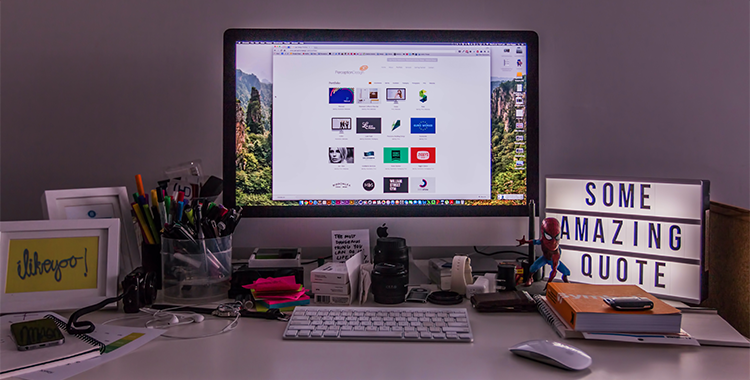
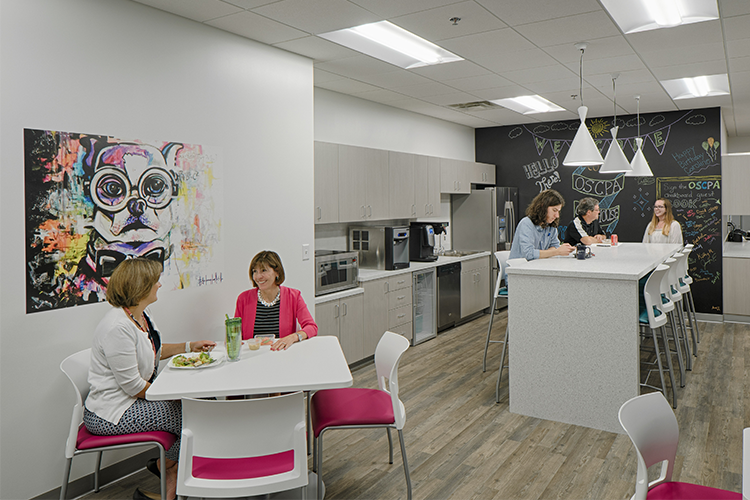
Looking beyond your immediate work area, where are the collaboration areas near you? Think of a space that allows for you and your teammates to create, innovate and share. Today, many industries are moving toward a project-based system and with this shift collaboration spaces are as important as a person’s desk. In the same way you need a variety of work spaces, you need a diversity of team spaces. From pin-up spaces, informal areas, and standing desks to formal meeting rooms – it is critical that collaborative space evolve and fit the teams that need them. Semi-private to private teaming areas allow for teams to work on confidential projects, have private conversations, and give those that are easily distracted a place to escape. Flexibility is the key to an evolving workplace that can adapt to new and ever-changing technologies. More public collaboration areas such as informal spaces or pin-up spaces allow for the spontaneous interactions allowing for other people outside of a particular team to provide feedback in a setting where technology is ubiquitous. Location is also key, whether it is allowing a corridor to become more than just a passageway or by creating meeting rooms with their own personality; collaboration spaces are more than just a meeting room.
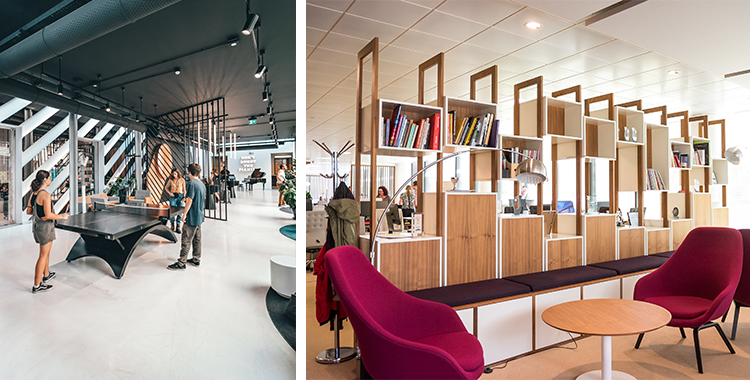
The increased use of collaboration space has led to a smaller square footage for individual workspaces. “In 1994, the average office worker had 90 square feet of office space, but the area had been whittled down to 75 square feet in 2010, according to the International Facility Management Association, a professional network for the facility management industry.” [ 5 ]
Scale 2: The Neighborhood
How is your office building subdivided? Are floor plates broken down by departments or by different companies? Your office building is a neighborhood that is compromised of the companies and departments that come together in one location. Successful neighborhoods with vibrant street life are enhanced by stoops and sidewalks - a place where we can sit and walk that connects us to the life of the street and encourages us to interact with our neighbors. If the office is a neighborhood, where are the stoops and sidewalks? For the most part, individual companies occupying one building tend to self-segregate for security reasons, each with their own communal areas for their staff, never crossing paths except when entering and exiting the building. While lobbies can function as the stoop of the building, they are typically considered to be just a thoroughfare. By activating the lobby or atrium in a different way through an inclusion of informal gathering areas, communal rooms, pin up space, and nourishment opportunities, it can become integral to a larger office ecology. This new kind of lobby becomes a place for individuals and teams to come together, share their perspectives, and leave their bubbles.
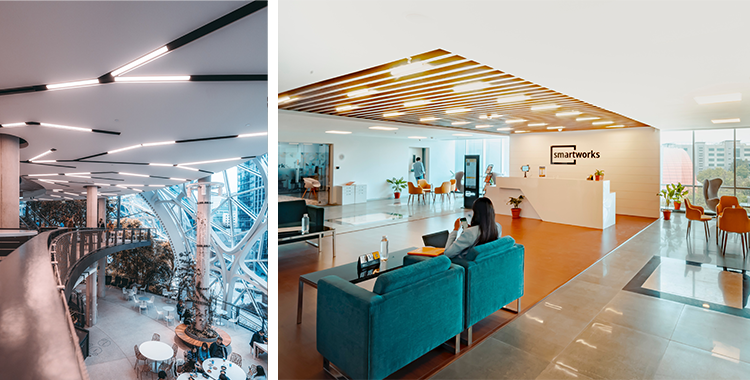
Communal spaces shouldn’t end at the lobby, they can be scattered throughout the building in spaces across the floor plates and corridors between companies or departments. Recently, co-working spaces, which are shared office environments under one roof for various companies, freelancers, and start-ups, have become prominent in urban centers. Co-working spaces provide a physical forum within which different types of organizations can interact with each other, sharing their knowledge through a multi-disciplinary environment. Though the focus of the co-working format to-date has been on collections of smaller individual companies, this model can also be applied to larger companies and communities.
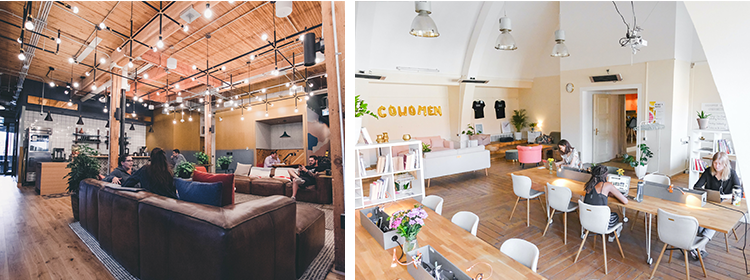
Scale 3: The City
Every city has a vibe, an energy that is fueled by its inhabitants. Your workplace contributes to that energy. There are two ways an office can connect to the city: 1) through public service and, 2) through context-sensitive design. The first is related directly to company culture: In the same way your individual workspace does not exist in isolation, neither does your company from a broader community ecology. Through volunteerism, fundraising, social activism, and community activities one can connect and activate the workplace outside of its physical space. Engaging with a community is becoming an essential part of an individual’s ideal job. In a study led by Net Impact, a non-profit professional and student organization, employees whose companies provide a social or environmental impact to the world are satisfied with their job 2:1 to those whose companies do not. Over 35% of the graduating students are looking for companies that are committed to corporate social responsibility. The new generation entering the workforce is seeking more than a job but a community they can join and a community that goes beyond the cubicle. [ 6 ]
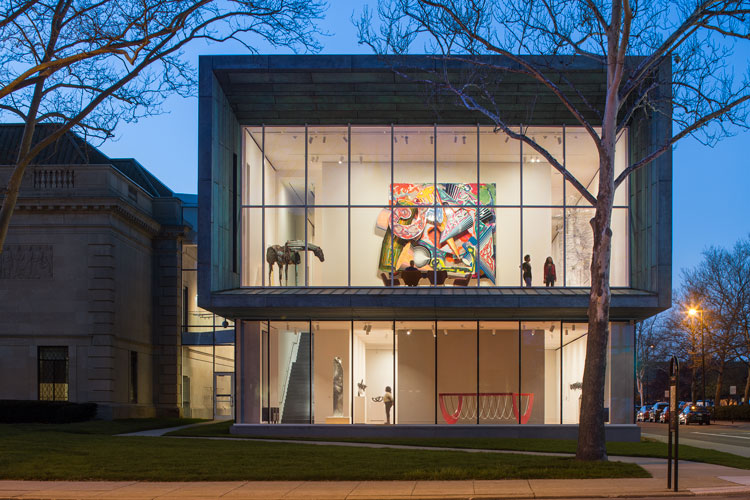
Physically, the building is already part of the city. The building takes space and ownership over a piece of land. But architecturally, the building can be more than an object. Through the design of community inspired amenities such as plazas, public atria, community spaces, and well-defined entries, the office becomes part of the city at large. The informal gathering spaces that activate the lobby can also become an extension of the street – blurring boundaries and giving people from all backgrounds a place to meet, connect, and expand their neighborhood.

Michael Bongiorno, AIA, LEED AP BD+C // Principal, Senior Designer
In his experience planning and designing more than 500,000 SF of office space, Michael believes the physical workplace is important because it has the ability to act as an incubator, bringing together a multitude of personalities and experiences to create, innovate, and learn from each other. Michael is a noted design leader with a focus on community impacting, mission-driven architecture that supports and enhances the fabric of the city and furthers a fundamental belief that great design is the essential building block to vibrant, healthy communities. His work has garnered numerous awards nationally, including The Wall Street Journal’s “Best Architecture of 2015” for the design of the Columbus Museum of Art’s Margaret M. Walter Wing.

Stephanie Sang Delgado // Project Architect
Stephanie’s multidisciplinary background brings a new perspective to design and her position as Project Architect at DesignGroup. She is interested in spaces of the 21st century that are continuously being shaped by new technologies and in creating spaces that encourage community and idea sharing in this new shifting landscape. Through her passion for design research, she applies new, innovative ideas to her work.
References
1. [ https://www.steelcase.com/insights/360-magazine/steelcase-global-report/ ]↩
2. [ http://www.newyorker.com/business/currency/the-open-office-trap ]↩
3. [ https://officesnapshots.com/2015/03/02/hulu-santa-monica-headquarters ]↩
4. [ http://la.haworth.com/docs/default-source/white-papers/effects-of-control-over-office-workspace1-pdf-28530.pdf?sfvrsn=12 ]↩
5. [ http://www.cnn.com/2011/LIVING/02/08/shrinking.american.cubicle/ ]↩
6. [ https://www.netimpact.org/sites/default/files/documents/what-workers-want-2012-summary.pdf ]↩
